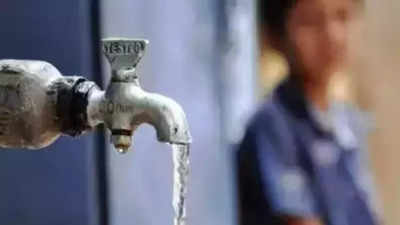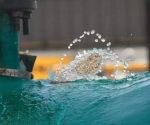Reviving Hyderabad water resources moving beyond lake rejuvenation to sustainable urban planning | Hyderabad News

HYDERABAD: With Hyderabad experiencing water crises as early as February each year and groundwater levels plummeting, the revival of lakes has offered a glimmer of hope for residents. However, experts caution that lake rejuvenation alone may not be enough to replenish the city’s depleting water table.
They stress the need for a multi-pronged approach, integrating urban planning strategies that enhance water absorption and conservation.
Three decades ago, the combined percolation capacity of lakes and open porous land—areas with soil that allows water to seep through easily—was around 60%, while concretised spaces accounted for only 40%, shared T V Ramachandra, a researcher from the Indian Institute of Science, Bengaluru.
“However, as cities expand rapidly, the balance has shifted dramatically. With urbanisation accelerating, the concretised area now exceeds 75%, leaving less than 25% of land available for percolation. It should be vice-versa to support the growing populace of metros,” he said.
He also cited an example from Bengaluru, where the rejuvenation of Sarakki Lake led to a 30-foot rise in groundwater levels and a measurable drop in local temperatures. “This took three years, but without proper storm water management, such extensive efforts could be undermined.
Before rejuvenating lakes, fixing drainage systems is crucial. If lakes continue to receive untreated sewage and industrial waste, contamination will remain a significant threat,” he said.
The latest data from the National Remote Sensing Centre (NRSC) paints a grim picture. Between 1979 and 2024, Hyderabad lost 61% of its lake area, with nearly 40 of its 185 notified lakes drying up completely. These include Ibrahim Cheruvu, RK Puram, and Gurram Cheruvu.
Experts highlight that simply restoring lakes will not be enough unless the city also adopts sustainable urban planning practices that promote water absorption and storage. “Measures such as permeable pavements, and soakaways—pits filled with gravel or porous materials that allow rainwater to percolate into the ground—can significantly boost groundwater recharge,” said B Malav, an urban planner from Rajasthan.
Many cities, he noted, are also exploring the ‘sponge city’ model, which focuses on absorbing, storing, and reusing rainwater instead of allowing it to drain away. “This model includes rain gardens—vegetated depressions that collect rainwater from streets and rooftops, allowing it to seep into the ground rather than flowing into drains. Green roofs, which are covered with vegetation, also help by absorbing rainwater, lowering surface temperatures, and slowing down water flow,” Malav said.
Other features of sponge cities include bioswales and urban wetlands—landscaped drainage channels that filter storm water. “If Hyderabad adopts these strategies, it can maximise the impact of lake rejuvenation efforts and establish a long-term, sustainable water recharge system,” he added.
Another key solution, experts say, lies in restoring the city’s historic water-holding structures, such as stepwells and Bowlis (small traditional wells). “In ancient times, people relied on natural indicators—land type, tree species, and migratory bird patterns—to identify water-rich areas.
They then dug stepwells and Bowlis, which served as critical reservoirs for communities,” said Kalpana Ramesh, a conservationist leading efforts to revive Hyderabad’s stepwells.
Hyderabad is home to over 6,000 Bowlis and more than 100 stepwells. While nearly 20 have been successfully restored, many others are in various stages of revival. These heritage structures have immense potential, capable of storing millions of litres of water.
“A recently restored stepwell, Bansilal Stepwell—built during the British era—can hold 22 lakh litres of water. A 900-year-old stepwell near Shamshabad remains fully functional, with a storage capacity of 30–35 lakh litres,” Kalpana shared, adding, “Other revived stepwells include those in Kokapet (15 lakh litres capacity), Kondapur (nine lakh litres), Hyderabad Public School, and ITC Kakatiya, both of which can store over 10 lakh litres each.
There are three stepwells at Rashtrapati Nilayam as well. This means that these wells are sufficient and can still serve the city with its growing needs.”
















